I am new to Azure. I have this existing VM. It was built by my colleague and I think he built it through the Marketplace with the Azure portal.
Now I want to build a new one with the same settings (that have the same performance spec) such as the VM sku, OS disk, and data disk. I don't want to keep any existing data. It will be built in a different RG with a different VNet and subnet. What is the best way to do it?
I tried to "export template" on the current VM but I think the JSON file just specifies the existing disks and NIC to use, instead of creating new ones. Here is what it looks like
{
"$schema": "https://schema.management.azure.com/schemas/2019-04-01/deploymentTemplate.json#",
"contentVersion": "1.0.0.0",
"parameters": {
"virtualMachines_myCurrentVM_name": {
"defaultValue": "myCurrentVM",
"type": "String"
},
"disks_myCurrentVM_OsDisk_1_xxxxxx_externalid": {
"defaultValue": "/subscriptions/12345678-abcd-abcd-abcd-12345678/resourceGroups/nmtprdarmrgp001/providers/Microsoft.Compute/disks/myCurrentVM_OsDisk_1_xxxxxx",
"type": "String"
},
"disks_myCurrentVM_DataDisk_0_externalid": {
"defaultValue": "/subscriptions/12345678-abcd-abcd-abcd-12345678/resourceGroups/nmtprdarmrgp001/providers/Microsoft.Compute/disks/myCurrentVM_DataDisk_0",
"type": "String"
},
"networkInterfaces_myCurrentVM290_externalid": {
"defaultValue": "/subscriptions/12345678-abcd-abcd-abcd-12345678/resourceGroups/nmtprdarmrgp001/providers/Microsoft.Network/networkInterfaces/myCurrentVM290",
"type": "String"
}
},
"variables": {},
"resources": [
{
"type": "Microsoft.Compute/virtualMachines",
"apiVersion": "2021-11-01",
"name": "[parameters('virtualMachines_myCurrentVM_name')]",
"location": "westus2",
"tags": {
"a": "1",
"b": "2"
},
"plan": {
"name": "f5-bigiq-virtual-edition-byol",
"product": "f5-big-iq",
"publisher": "f5-networks"
},
"properties": {
"hardwareProfile": {
"vmSize": "Standard_D4_v3"
},
"storageProfile": {
"imageReference": {
"publisher": "f5-networks",
"offer": "f5-big-iq",
"sku": "f5-bigiq-virtual-edition-byol",
"version": "latest"
},
"osDisk": {
"osType": "Linux",
"name": "[concat(parameters('virtualMachines_myCurrentVM_name'), '_OsDisk_1_xxxxxx')]",
"createOption": "FromImage",
"caching": "ReadWrite",
"managedDisk": {
"storageAccountType": "StandardSSD_LRS",
"id": "[parameters('disks_myCurrentVM_OsDisk_1_xxxxxx_externalid')]"
},
"deleteOption": "Detach",
"diskSizeGB": 120
},
"dataDisks": [
{
"lun": 0,
"name": "[concat(parameters('virtualMachines_myCurrentVM_name'), '_DataDisk_0')]",
"createOption": "Attach",
"caching": "ReadOnly",
"writeAcceleratorEnabled": false,
"managedDisk": {
"storageAccountType": "StandardSSD_LRS",
"id": "[parameters('disks_myCurrentVM_DataDisk_0_externalid')]"
},
"deleteOption": "Detach",
"diskSizeGB": 128,
"toBeDetached": false
}
]
},
"osProfile": {
"computerName": "[parameters('virtualMachines_myCurrentVM_name')]",
"adminUsername": "azureuser",
"linuxConfiguration": {
"disablePasswordAuthentication": true,
"ssh": {
"publicKeys": [
{
"path": "/home/azureuser/.ssh/authorized_keys",
"keyData": "ssh-rsa <some key here>"
}
]
},
"provisionVMAgent": true,
"patchSettings": {
"patchMode": "ImageDefault",
"assessmentMode": "ImageDefault"
}
},
"secrets": [],
"allowExtensionOperations": true,
"requireGuestProvisionSignal": true
},
"networkProfile": {
"networkInterfaces": [
{
"id": "[parameters('networkInterfaces_myCurrentVM290_externalid')]"
}
]
},
"diagnosticsProfile": {
"bootDiagnostics": {
"enabled": true
}
}
}
}
]
}
Is it the best way to edit and modify the JSON file, or there is another way to do this? Thanks!



